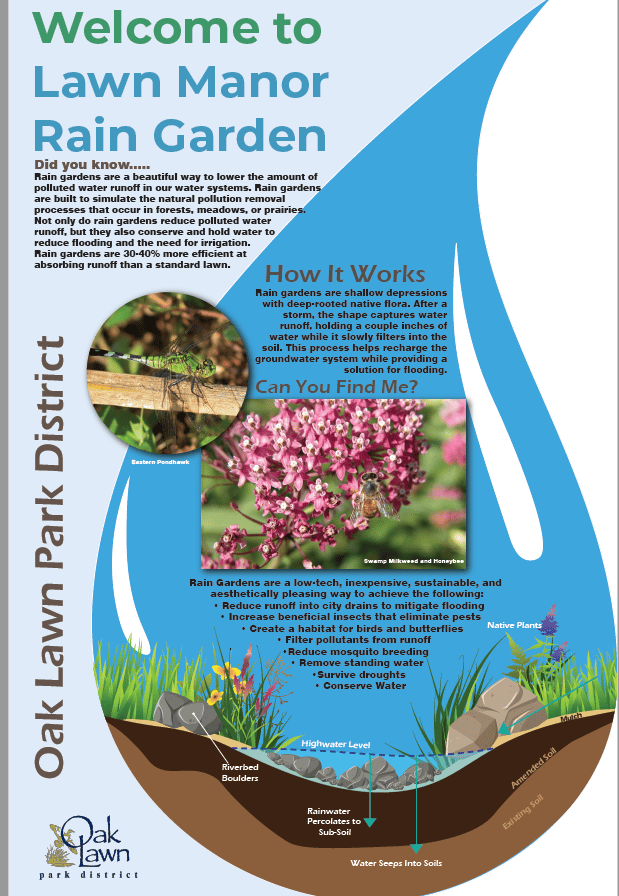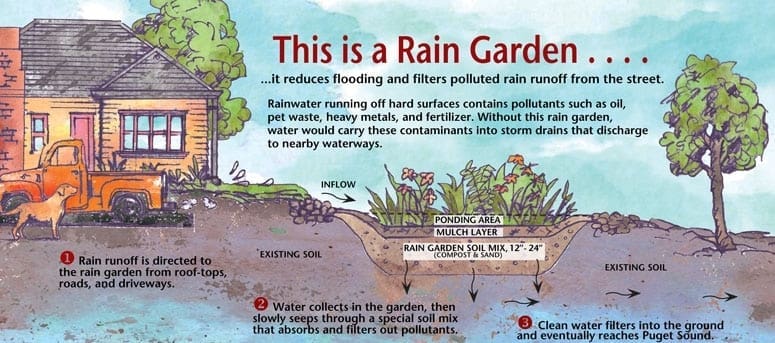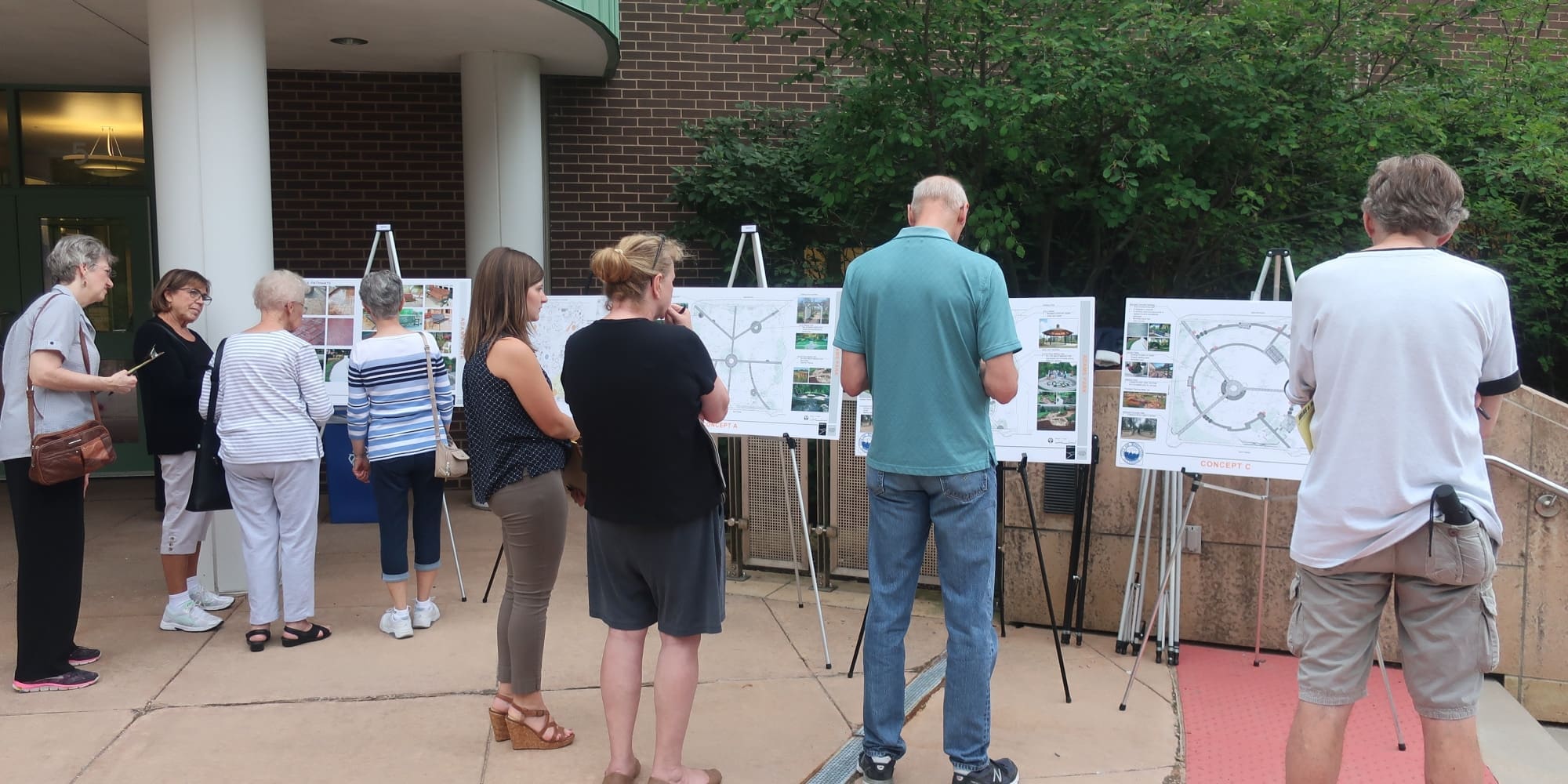Rain gardens have multiple benefits that can solve common drainage problems from a community playground to the edge of a parking lot. They are beneficial for our pollinator friends, and they are also good for preventing soil erosion. Rain gardens work by using deep-rooted plant species inside of a depressed bed that traps storm water. This process gathers the moving water, which also works to prevent run off. When properly installed, the ground water will be gradually absorbed in a day or less. Because of the quick absorption, mosquito habitat is minimized. The water is filtered by the roots before being absorbed, which can also help to clean contaminated waters before it makes its way into the aquifers and natural waterways.
With a sewer system that dates back to 1880 in some parts of the city, Aurora, Illinois has incorporated the IEPA (Illinois Environmental Protection Agency) economical plan to help keep the Fox River safe by incorporating rain gardens to the city landscape. This is reducing the amount of pollution that reaches the river, feeding the pollinators, and adding low maintenance- natural beauty to the street corners. Additional benefits include using these gardens as a means to slow neighborhood traffic. The city’s rain garden designs create bump-outs at the intersections, automatically making drivers slow down at the crosswalks.
Rain gardens can be created anywhere that water regularly pools. At Lawn Manor park site in Oak Lawn, Illinois, Upland created a rain garden to assist with infiltration and insect habitat. A sign was then added to the park site to help park visitors understand the benefits of the rain garden. When installing one in your yard, you want to ensure your garden is placed downhill from one of your home’s downspouts. A mixture of compost and sand should be placed at the base of the depression, about two feet down. This layer will be topped with mulch, allowing the water to pool on top of this layer. Your plants with the deepest roots should be placed at the center of your garden.
Get your kids excited about rain gardens with the coloring and informational book put together by FEMA or see our resources below for more information about rain gardens.






